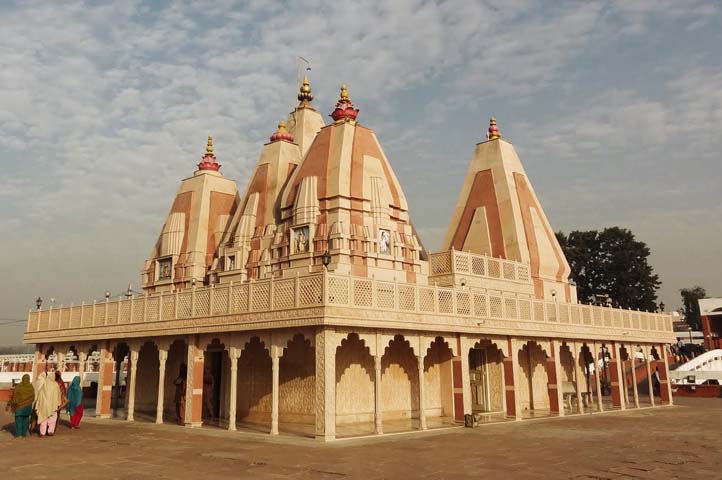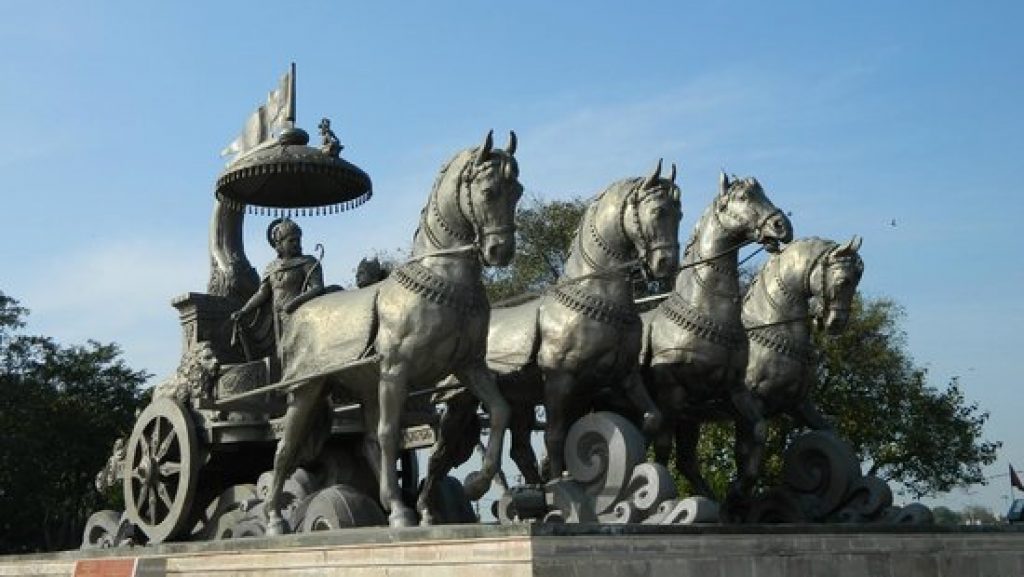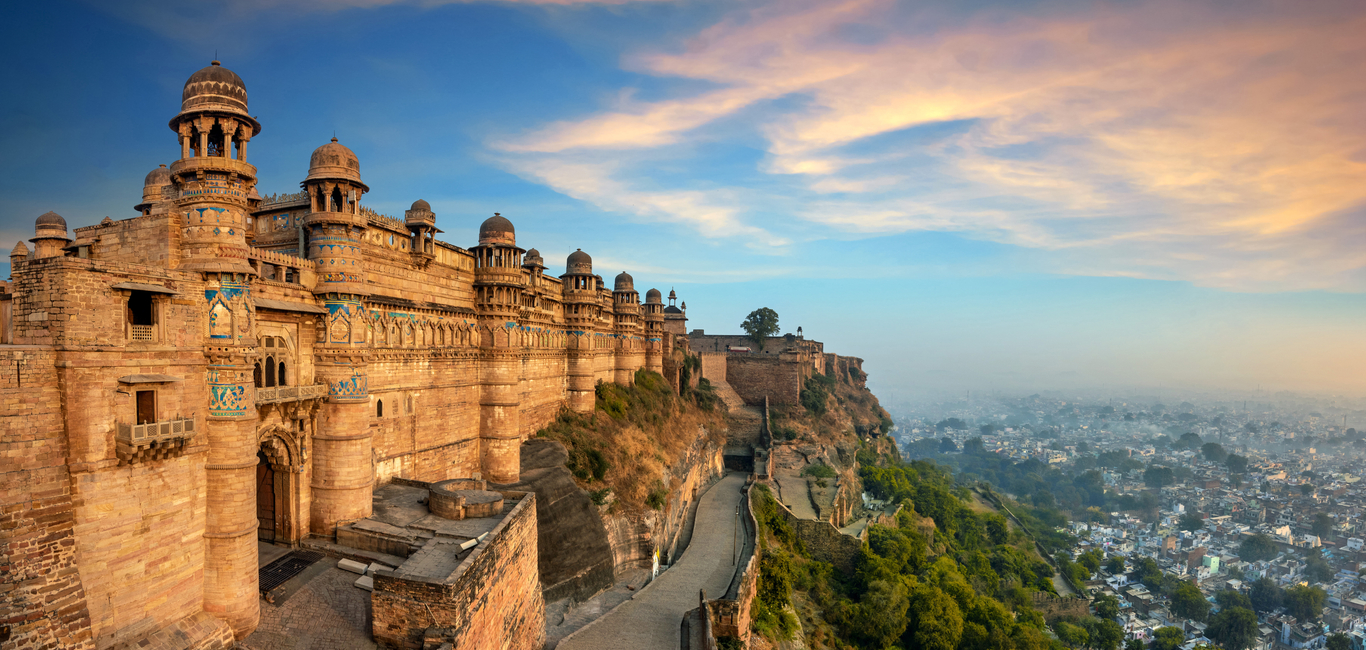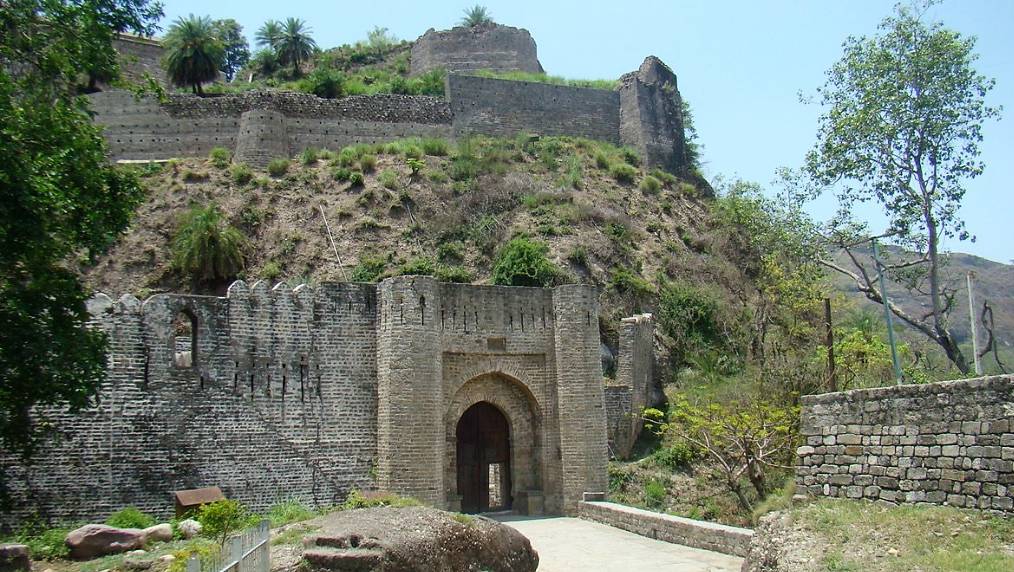Kurukshetra, the ‘Land of Mahabharta’ is one of the holiest Hindu pilgrim centers in the country. It is named after King Kuru, the descendent of legendary king Bharat, after whom India was named Bharat. According to Puranas, Kurukshetra is the site from where Lord Brahma created the universe. It was here that the 18-day long Mahabharta battle between Kauravas and Pandavas was fought. And, where Lord Krishna preached the philosophy of ‘Karma’ to Arjuna, before the start of the epic battle. The very first verse of ‘Bhagwat Gita’ describes Kurukshetra as ‘Dharam-kshetra’ or the Region of Righteousness’. The region has 360 sacred sites associated with Mahabharta. Kurukshetra is also a highly revered Sikh pilgrim site, as it is one of the very few places visited by all the Sikh Gurus. It also has sacred sites for Muslims like the beautiful white marble tomb of Sufi saint Sheikh Chehli Jalal, Chini Masjid, and Pathar Masjid, etc.

Brahma Sarovar: The huge water tank is one of the most sacred sites of Kurukshetra. The lotus-like temple of Sarveshwar Mahadev in the center of the tank is dedicated to Lord Shiva. According to mythological legends, Lord Brahma established a Shivalinga and worshipped Lord Shiva here. The holy water body is 1298 meters long and 630 meters wide and is divide into two by a small passage. It is surrounded by 20 ft. wide platforms, stairs, and a 40 ft wide ‘parikrama’. There are also some meditation Chambers built for the convenience of pilgrims. Some ancient shrines are located around the tank. A holy dip in the waters of the Sarovar absolves one of all sins and is considered De of great importance, especially on the days of an eclipse, Amavasya (moonless night), and during the Kumbh.
Lakshmi Narayan Temple: This important shrine located just opposite the Brahma Sarovar is dedicated to Lord Narayan (Vishnu) and his consort Lakshmi. The towering spire of the shrine dominates the skyline and its architecture is noteworthy.
Sannehit Sarovar: The sacred water body is located about 1 km. north-east of Brahma Sarovar. Mythological legends suggest that the Sarovar was created by the holy water that flowed from Lord Brahma’s navel. It is believed that the devotees are blessed by praying, bathing, or just by touching the water of the tank.
Gurudwaras: There are some gurudwaras at Kurukshetra. The most important are the Gurudwara Sidhbati, Gurudwara Patshahi, and Gurudwara Rajghat.
Sheikh Chehli’s Tomb: The beautiful tomb resembling the Taj was built by Dara Shikoh (Shah Jahan’s son) in memory of his spiritual teacher.
Kurukshetra Panorama Project & Science Centre: Highlights the scientific progress of man and the epic Mahabharata.
Sri Krishna Museum: It lies near the Brahma Sarovar and provides a glimpse of the history and archaeology of the region. The museum has beautiful sculptures of Lord Krishna.
Around Kurukshetra
Jyotisar (5 kms.)
The small pond of Jyotisar or the source of light and inspiration is said to be the place where Lord Krishna preached the philosophy of Karma through the ‘Gita Upadesh’, just before the battle of Mahabharta. The Jyotisar tank is surrounded by bathing ghats and ancient shrines.
The main attraction on the banks of the sacred pond is – 150-year-old Shiva temple built by the Maharaja of Kashmir, the Shankracharya temple, where Adi Shankracharya is said to have meditated and an ancient banyan tree, under which the marble image of Lord Krishna and Arjuna were erected by the Shankracharya of Kanchi in 1967. An excellent sound and light show is held in the evening which brings the message of Bhagavad Gita. Haryana Tourism has built the Jyotisar complex here for the convenience of the pilgrims.
Thanesar
Thanesar, the twin city of Kurukshetra is one of the most important Hindu pilgrim centers. It is named after the ‘Sthan-esver’ or the abode of God (Mahadev) and was an ancient center of learning. The main attractions here are the temples of Sthanesvar Mahadev and Ma Bhadrakali.
Pehowa
The pilgrim center 27 kms. west of Thanesar is regarded to be a sacred site for the ceremony of ‘pind-daan’, which grants Moksha (salvation) to the departed soul.




